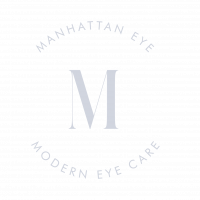GLAUCOMA
In New York City
Glaucoma is a disease of the optic nerve, the cord that connects your eyeball to your brain.
GLAUCOMA NYC
"Dr. Rapoport is a skilled, knowledgeable, sincerely caring medical professional. I started seeing her a year ago and have since moved out of state. Regardless, it’s a priority for me to continue under her good care. I feel confident in her abilities - and it is my eyesight afterall."
Clarisa P. - Verified Patient
GLAUCOMA FAQS
What is Glaucoma?
Glaucoma is a disease of the optic nerve, the cord that connects your eyeball to your brain. A disease of the optic nerve is called an “optic neuropathy” and glaucoma is the most common optic neuropathy. Other optic neuropathies include:
· Arteritic ischemic optic neuropathy (Giant Cell Arteritis, Temporal Arteritis)
· Nonarteritic ischemic optic neuropathy
· Nutrient deficient optic neuropathy
There are many different types of glaucoma. The most common, primary open angle glaucoma, or POAG, is characterized by an open angle (the area where the aqueous fluid drains into the trabecular meshwork). Angle closure glaucoma is less common. If your eyeball is short and you are farsighted (your prescription begins with “+” then you may be at risk for acute angle closure . This happens then the pupil enlarges and the iris bunches sup into the angle where the aqueous usually drains. This leads to the fluid in the front of the eye not having a place to drain, and your intraocular pressure becoming very high. Comprehensive eye exam and steady regular eye care are crucial to find out if you have narrow angles which can lead to narrow angle glaucoma. In this case, even if you have a regular eye pressure, you may need a laser or eye drops to lower the eye pressure.
POAG can have elevated or normal eye pressure, and an enlarged or normal optic nerve. Most typically, the cup to disc ratio is enlarged. When Dr. Rapoport looks inside your eye, the optic nerve looks like a donut. In a normal eye, the “donut hole” is about 0.3 of the entire donut. In a patient with glaucoma, that hole is enlarged, anywhere from 0.6 to 0.99. This signifies thinning of the optic nerve. Regular eye exams are crucial to know your eye pressure and whether you have any risk factors for developing angle closure glaucoma, normotensive glaucoma, or primary open angle glaucoma.
There is an entity called normal pressure glaucoma, in which the optic nerve is thinned and there is progressive peripheral vision loss, but the eye pressure is of a normal range. In these patients the goal intraocular pressure is even lower. Regular eye pressure in the eye is anywhere between 8-22mmHg, and elevated eye pressure is greater than 22mmHg, but in an eye that already has glaucoma, the goal eye pressure is in the low teens.
WHY CHOOSE MANHATTAN EYE?

Glaucoma Treatment with Dr. Rapoport in NYC
Dr. Rapoport is a glaucoma expert, and treats glaucoma medically with pressure lowering-drops, laser, and microinvasive glaucoma surgery. With years of focused medical and surgical training, Dr. Rapoport possess a unique knowledge of the anatomy and physiology of the fluid drainage system in the eye. She has written papers on glaucoma eye drop side effects as well as the difficulty in glaucoma drop compliance amongst patients. She creates a personalized comprehensive glaucoma plan for each individual patient, optimizing intraocular pressure lowering and decreasing side effects.
“I've been essentially blind my whole life and recently decided to get elective eye surgery. I unfortunately did not qualify for Lasik, but did qualify for PRK.
Dr. Rapoport was fantastic - she explained all my options in detail and was very diligent in giving me instructions pre/post operations - even when I asked twice/three times. She's always available to talk and super empathetic. I could not recommend a better eye surgeon!”
Dr. Rapoport was fantastic - she explained all my options in detail and was very diligent in giving me instructions pre/post operations - even when I asked twice/three times. She's always available to talk and super empathetic. I could not recommend a better eye surgeon!”
M.V.
“Best eye doctor in New York! Dr. Rapoport is very personable, professional and most importantly a great doctor. Dr. Rapoport recently performed my LASIK surgery, for which she gave me clear pre and post-op instructions and made a point to check regularly on my progress. She did a great job to put my nerves at ease and walked me through the entire process. Now three weeks after the surgery I
can see better than ever with 20/20+ vision! I strongly recommend Dr. Rapoport if you are considering LASIK, or if you are simply in need of a great eye doctor.”
N.G.
“I have now seen Dr. Rapoport for dry eyes, removal of papillomas around my eyes, and Lasik
surgery. My experiences with her have all been wonderful. She always takes the time to
explain everything really clearly, and my results have all been great. When I originally asked
about Lasik, she gave me a very balanced perspective on my options, which I really
appreciated. She also has a great energy about her, and she's just an overall pleasure to be
around. I have referred several friends and family to her and they've all said great things about
her as well. I can't recommend her enough.”
M.T.
“After seeing Dr. Rapaport for three months I have experienced the greatest improvement for
my dry eye syndrome than I have in the past 15 years. Dr. Rapaport is very knowledgable and
caring. I am very grateful to her and her staff, in particular to Amy, who has been incredibly
helpful to me. Everyone here conducts themselves in a highly professional manner, and they
also run a tight ship in terms of timeliness. I have been seen every time without waiting any
more than 5 minutes, and this I appreciate a lot. I feel very fortunate to be a patient at this
medical practice.”
H.K.
“Dr Rapoport is a skilled, knowledgeable, sincerely caring medical professional. I started
seeing her a year ago and have since moved out of state. Regardless, it’s a priority for me to
continue under her good care.
I feel confident in her abilities - and it is my eyesight afterall!”
I feel confident in her abilities - and it is my eyesight afterall!”
P.J.





